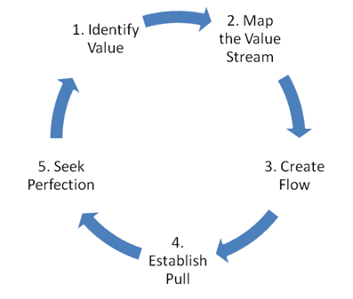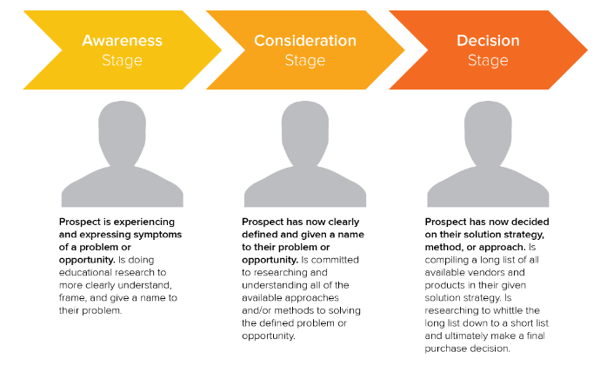Most people working in the Canadian Manufacturing Industry have at least heard of “Lean Manufacturing”. Most notably applied by Toyota, the core idea is to maximize customer value while minimizing waste. This philosophy has been carried out on shop floors and plants around the globe, resulting in increased profitability.
There’s no reason why these same principles can’t be applied to your marketing efforts. This diagram from Lean.org outlines basic Lean principles nicely.

So how do basic Lean principles fit with your marketing? Let's break it down.
1. Identify Value
Determining customer value in your products and service is a fundamental starting point for your marketing strategy. We often do this when researching to create Buyer Personas, not only are you looking for the demographics of your target customers but you are trying to find out why they do business with you. What do they value from your company? Whether it’s the custom work you do, the emergency service, just in time production or the state of the art technology processes used in your plant, knowing what they value allows you to have more meaningful conversations with them.
2. Map the Value Stream
In Lean Manufacturing, this means identifying all the steps in the value stream and eliminating those that do not create value. In marketing, this is looking at the buyer’s journey and how your sales and marketing adds value to your customers at the various stages along the journey. If you have marketing material that isn’t performing or meeting prospects needs then eliminate it. Your goal is to really hone in on what is working for your ideal customer.
Buyer's Journey

3. Create Flow
Creating flow on the shop floor is about tightening up workspaces, organizing materials so they are located where they are needed in the plant. If a worker has to walk 100 steps to a workstation 50 times in a day, it only makes sense to bring that workstation closer. In marketing, we do this through creating email templates that can be personalized rather than starting with a blank screen. It’s also about creating processes for how you are engaging with prospective customers as they go through the buyer’s journey. Providing the right information to your customers when they are looking for it is creating flow.
4. Establish Pull
In a manufacturing environment pull can be about pulling work onto the shop floor but really it can be any instance when a customer is pulling value from the next upstream activity. In marketing it means providing rich content for your customers to give them value and help them along the buyer’s journey. Offering value to customers that they can ‘pull’ builds trust and loyalty.
5. Seek Perfection
The cycle of Lean Manufacturing is that you are constantly looking for better ways to eliminate waste, add value and create efficiencies. The same applies for your marketing. Analyze your campaigns, your content, your offerings and hone in on the ones that are top performing and constantly tweak them to make them perform better.
-30-
